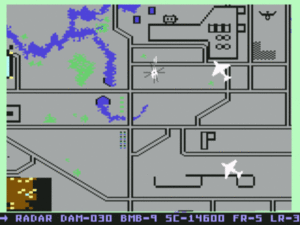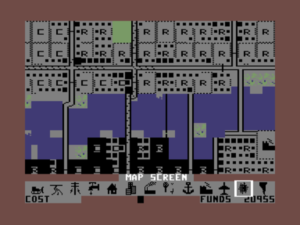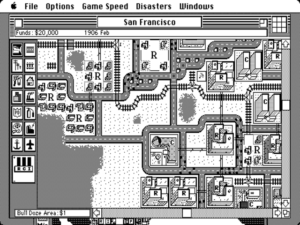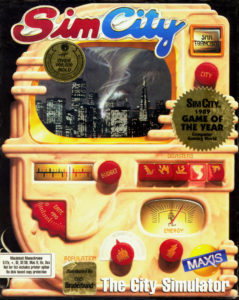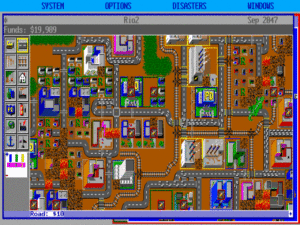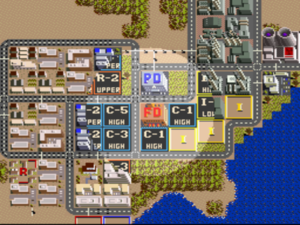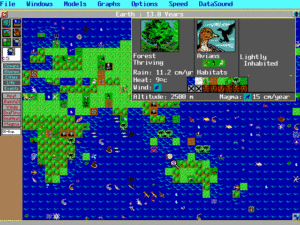In “The Seventh Sally,” a story by the great Polish science-fiction writer Stanislaw Lem, a god-like “constructor” named Trurl comes upon a former tyrant named Excelsius, now exiled to a lonely asteroid by the peoples of the planets he used to terrorize. Upon learning of Trurl’s powers, Excelsius demands that he restore him to his throne. Trurl, however, is wise enough to consider what suffering Excelsius’s reinstatement would bring to his subjects. So, he instead fashions an intricate simulacrum of a kingdom for Excelsius to rule over.
And all of this, connected, mounted, and ground to precision, fit into a box, and not a very large box, but just the size that could be carried about with ease. This Trurl presented to Excelsius, to rule and have dominion over forever; but first he showed him where the input and output of his brand-new kingdom were, and how to program wars, quell rebellions, exact tribute, collect taxes, and also instructed him in the critical points and transition states of that microminiaturized society — in other words the maxima and minima of palace coups and revolutions — and explained everything so well that the king, an old hand in the running of tyrannies, instantly grasped the directions and, without hesitation, while the constructor watched, issued a few trial proclamations, correctly manipulating the control knobs, which were carved with imperial eagles and regal lions. These proclamations declared a state of emergency, martial law, a curfew, and a special levy. After a year had passed in the kingdom, which amounted to hardly a minute for Trurl and the king, by an act of the greatest magnanimity — that is, by a flick of the finger at the controls — the king abolished one death penalty, lightened the levy, and deigned to annul the state of emergency, whereupon a tumultuous cry of gratitude, like the squeaking of tiny mice lifted by their tails, rose up from the box, and through its curved glass cover one could see, on the dusty highways and along the banks of lazy rivers that reflected the fluffy clouds, the people rejoicing and praising the great and unsurpassed benevolence of their sovereign lord.
And so, though at first he had felt insulted by Trurl’s gift, in that the kingdom was too small and very like a child’s toy, the monarch saw that the thick glass lid made everything inside seem large; perhaps too he duly understood that size was not what mattered here, for government is not measured in meters and kilograms, and emotions are somehow the same, whether experienced by giants or dwarfs — and so he thanked the constructor, if somewhat stiffly. Who knows, he might even have liked to order him thrown in chains and tortured to death, just to be safe — that would have been a sure way of nipping in the bud any gossip about how some common vagabond tinkerer presented a mighty monarch with a kingdom. Excelsius was sensible enough, however, to see that this was out of the question, owing to a very fundamental disproportion, for fleas could sooner take their host into captivity than the king’s army seize Trurl. So with another cold nod, he stuck his orb and scepter under his arm, lifted the box kingdom with a grunt, and took it to his humble hut of exile. And as blazing day alternated with murky night outside, according to the rhythm of the asteroid’s rotation, the king, who was acknowledged by his subjects as the greatest in the world, diligently reigned, bidding this, forbidding that, beheading, rewarding — in all these ways incessantly spurring his little ones on to perfect fealty and worship of the throne.
When first published in 1965, Lem’s tale was the most purely speculative of speculative fictions, set as it was thousands if not millions of years in the future. Yet it would take just another quarter of a century before real-world Excelsiuses got the chance to play with little boxed kingdoms of their own, nurturing their subjects and tormenting them as the mood struck. The new strain of living, dynamic worlds filled with apparently living, dynamic beings was soon given the name of “god game” to distinguish it from the more static games of war and grand strategy that had preceded it.
The first of the great god-game constructors, the one whose name would always be most associated with the genre, was a hyperactive chain-smoking, chain-talking Southerner named Will Wright. This is the story of him and his first living world — or, actually, living city — in a box.
Will Wright has always been a constructor. As a boy in the 1960s and 1970s, he built hundreds of models of ships, cars, and planes. At age 10, he made a replica of the bridge of the Enterprise out of balsa wood and lugged it to a Star Trek convention; it won a prize there, the first of many Wright would get to enjoy during his life. When developments in electronics miniaturization made it possible, he started making his creations move, constructing primitive robots out of Lego bricks, model kits, and the contents of his local Radio Shack’s wall of hobbyist doodads. In 1980, the 20-year-old Wright and his partner Rick Doherty won the U.S. Express, an illegal coast-to-coast automobile race created by the organizer of the earlier Cannonball Run. A fighter jet’s worth of electronics allowed them to drive from New York City to Santa Monica in 33 hours and 39 minutes in a Mazda RX-7, cruising for long stretches of time at 120 miles per hour.
Wright was able to indulge these passions and others thanks to his late father, a materials engineer who invented a lucrative new process for manufacturing plastic packaging before dying of leukemia when his son was just 9 years old. His widow was very patient with her eccentric tinkerer of a son, similar in some ways to his practical-minded father but in others very different. Wright spent five years at various universities in and out of his home state of Louisiana, excelling in the subjects that caught his fancy — like architecture, economics, mechanical engineering, and military history — while ignoring entirely all the others. Through it all, his mother never put any undue pressure on him to settle on something, buckle down, and get an actual degree. When he told her in no uncertain terms that he wouldn’t be taking over the family business his father had left in trust for him, she accepted that as well. Yet even she must have struggled to accept the notion of her 22-year-old son running off to California with Joell Jones, a painter 11 years his senior; the two had bonded when Jones severed a nerve in her wrist and Wright built a gadget out of metal and rubber bands to allow her to continue to paint. The two would marry in 1984.
Given his love for electronic gadgetry, it will likely come as no surprise that Wright was snared quickly by the nascent PC revolution. Already by 1980 he had added an Apple II to his collection of toys, and with it computer programming and computer gaming to his long list of hobbies; his first computerized love was Bruce Artwick’s primitive original Flight Simulator. But it was only after moving to Oakland with Jones that he started thinking seriously about writing a game of his own. This first and arguably last entirely practical, commercial project of his life was apparently prompted by his now living permanently away from home, an adult at last. At some point even a dreamer has to do something with his life, and making computer games seemed as good a choice as any.
His first game was in some ways the antithesis of everything he would do later: a conventional experience in a proven genre, a game designed to suit the existing market rather than a game designed to create its own new market, and the only Will Wright game that can actually be won in the conventional sense. Like many games of its era, its design was inspired by a technical trick. Wright, who had moved on from his Apple II to a Commodore 64 by this time, had figured out a way to scroll smoothly over what appeared to be a single huge background image. “I knew the Apple couldn’t begin to move that much in the way of graphics around the screen that quickly,” he says. “So I designed the game around that feature.”
Raid on Bungeling Bay owed a lot to Choplifter and a little to Beach-Head, sending you off in a futuristic helicopter to strike at the heart of the evil Bungeling Empire, returning when necessary to your home base for repairs and more ammunition. The most impressive aspect of the game, even more so than its graphical tricks, was the sophisticated modeling of the enemy forces. The Bungeling factories would turn out more advanced hardware as time went on, while your ability and need to disrupt supply lines and to monitor and attack the enemy on multiple fronts created a craving for at least a modicum of strategy as well as reflexes.
Wright sold Raid on Bungeling Bay to Brøderbund Software, who published it in 1984, whereupon it sold a reasonable if hardly overwhelming 30,000 copies on the Commodore 64. But, in contrast to so many of its peers, that wasn’t the end of the story. Hudson Soft in Japan took note of the game, paying Brøderbund and Wright for the right to make it into a cartridge for the Nintendo Entertainment System. Wright claims it sold an astonishing 750,000 copies on the NES in Japan and later the United States, giving him a steady income while he played around with the ideas that would become his next project, the one that would really make his name.
As it happened, the first project merged into the second almost seamlessly. Wright had written a tool for his own use in creating the Bungeling Empire’s cities, a little world editor that would let him scroll around a virtual space, laying down tiles to represent land and sea, factories and gun turrets. He realized at some point — perhaps after his game had shipped and yet he was still tinkering with his world inside the editor — that he found this task of creation much more compelling than the act of destruction that was actually playing the game. Might there be others who felt like him? Based on the success of Electronic Arts’s Pinball Construction Set, a program he hugely admired, he thought there just might be.
One fateful day Wright shared his world editor and his still half-baked ideas about what to do with it with his neighbor Bruce Joffe. An established architect and urban planner, Joffe had studied under Jay Wright Forrester at MIT, generally regarded as the founder of the entire field of system dynamics — i.e., using a computer to simulate a complex, dynamic reality. When he saw Wright’s little Bungeling Empire cities, Joffe was immediately reminded of Forrester’s work. He wasted no time in telling his friend that he really needed to check this guy out.
Even though the two have never to my knowledge met, Jay Wright Forrester and Will Wright were a match made in heaven; they shared much beyond the name of “Wright.” Both, to name one example, got their start in the field of simulation with a flight simulator, Jay Wright Forrester trying to build one and Will Wright trying to figure out how Bruce Artwick’s Flight Simulator really worked.
Driven by his desire to make a flight simulator, Forrester had been instrumental in the creation of Whirlwind, the first real computer, in the sense that we understand the term today, to be built in the United States. [1]The more canonical example in American textbooks, the ENIAC, could only be “programmed” by physically rewiring its internals. It’s probably better understood as an elaborate calculating machine than a true computer; its original purpose was to calculate static artillery firing tables. As in so many things, politics plays a role in ENIAC’s anointment. The first computer programmable entirely in software, pre-dating even Whirlwind, was EDSAC-1, built at Cambridge University in Britain. That such a feat was first managed abroad seems to be just a bit more than some Americans in Silicon Valley and elsewhere can bring themselves to accept. The flight simulator never quite came together, but an undaunted Forrester moved on to Project SAGE, an air-defense early-warning system that became easily the most elaborate computing project of the 1950s. From there, he pioneered economic and industrial modeling on computers, and finally, in the late 1960s, arrived at what he called “urban dynamics.” Forrester’s urban modeling created a firestorm of controversy among city planners and social activists; as he put it in his dry way, it “was the first of my modeling work that produced strong, emotional reactions.” He was accused of everything from incompetence to racism when his models insisted that low-cost urban public housing, heretofore widely regarded as a potent tool for fighting poverty, was in reality “a powerful tool for creating poverty, not alleviating it.”
Of more immediate interest to us, however, is the reaction one Will Wright had to Forrester’s work many years after all the controversy had died away. The jacket copy of Forrester’s book Urban Dynamics reads like a synopsis of the simulation Wright was now about to create on a microcomputer: “a computer model describing the major internal forces controlling the balance of population, housing, and industry within an urban area,” which “simulates the life cycle of a city and predicts the impact of proposed remedies on the system.” When Wright’s neighbor Joffe had studied under Forrester in the 1970s, the latter had been constructing physical scale models of his urban subjects, updating them as time went on with the latest data extracted from his computer programs. If he could build a similar program to live behind his graphical Bungeling Empire cities, Wright would have found a much easier way to study the lives of cities. At about the same time that he had that initial conversation with Joffe, Wright happened to read the Stanislaw Lem story that opened this article. If he needed further inspiration to create his own city in a box, he found plenty of it there.
Never one to shy away from difficult or esoteric academic literature, Wright plunged into the arcane theoretical world of system dynamics. He wound up drawing almost as much from John Horton Conway’s 1970 Game of Life, another major landmark in the field, as he did from Forrester. Wright:
System dynamics is a way to look at a system and divide it into, basically, stocks and flows. Stocks are quantities, like population, and flows are rates, like the death rate, the birth rate, immigration. You can model almost anything using those two features. That was how he [Forrester] started system dynamics and that was the approach he took to his modeling. I uncovered his stuff when I started working on SimCity and started teaching myself modeling techniques. I also came across the more recent stuff with cellular automata [i.e., Conway’s Game of Life], and SimCity is really a hybrid of those two approaches. Because his [Forrester’s] approach was not spatial at all, whereas the cellular automata gives you a lot of really interesting spatial tools for propagation, network flow, proximity, and so forth. So the fact that pollution starts here, spreads over here, and slowly gets less and less, and you can actually simulate propagation waves through these spatial structures. So SimCity in some sense is like a big three-dimensional cellular automata, with each layer being some feature of the landscape like crime or pollution or land value. But the layers can interact on the third dimension. So the layers of crime and pollution can impact the land-value layer.
This description subtly reveals something about the eventual SimCity that is too often misunderstood. The model of urban planning that underpins Wright’s simulation is grossly simplified and, often, grossly biased to match its author’s own preexisting political views. SimCity is far more defensible as an abstract exploration of system dynamics than as a concrete contribution to urban planning. All this talk about “stocks” and “flows” illustrates where Wright’s passion truly lay. For him the what that was being simulated was less interesting than the way it was being simulated. Wright:
I think the primary goal of this [SimCity] is to show people how intertwined such things can get. I’m not so concerned with predicting the future accurately as I am with showing which things have influence over which other things, sort of a chaos introduction, where the system is so complex that it can get very hard to predict the future ramifications of a decision or policy.
After working on the idea for about six months, Wright brought a very primitive SimCity to Brøderbund, who were intrigued enough to sign him to a contract. But over the next year or so of work a disturbing trend manifested. Each time Wright would bring the latest version to Brøderbund, they’d nod approvingly as he showed all the latest features, only to ask, gently but persistently, a question Wright learned to loathe: when would he be making an actual game out of the simulation? You know, something with a winning state, perhaps with a computer opponent to play against?
Even as it was, SimCity was hardly without challenge. You had to plan and manage your city reasonably well or it would go bankrupt or drown in a sea of crime or other urban blights and you, the mayor, would get run out of town on a rail. Yet it was also true that there wasn’t a conventional winning screen to go along with all those potential losing ones. Wright tried to explain that the simulation was the game, that the fun would come from trying things out in this huge, wide-open possibility space and seeing what happened. He thought he had ample evidence from his friends that he wasn’t the only one who liked to play this way. They would dutifully build their cities to a point and then, just like Excelsius in the story, would have just as much fun tearing them down, just to see what happened. Indeed, they found the virtual destruction so enjoyable that Wright added disasters to the program — fires, earthquakes, tornadoes, even a rampaging Godzilla monster — that they could unleash at will. As with everything else in SimCity, the motivation for a player consciously choosing to destroy all her labor was just to see what would happen. After all, you could always save the game first. Wright:
When I first started showing the Commodore version, the only thing that was in there was a bulldozer, basically to erase mistakes. So if you accidentally built a road or a building in the wrong place you could erase it with the bulldozer. What I found was that, invariably, in the first five minutes people would discover the bulldozer, and they would blow up a building with it by accident. And then they would laugh. And then they would go and attack the city with the bulldozer. And they’d blow up all the buildings, and they’d be laughing their heads off. And it really intrigued me because it was like someone coming across an ant pile and poking it with a stick to see what happens. And they would get that out of their system in about ten minutes, and then they would realize that the hard part wasn’t destroying, but building it back up. And so people would have a great time destroying the city with a bulldozer, and then they would discover, “Wow, the power’s out. Wow, there’s a fire starting.” And that’s when they would start the rebuilding process, and that’s what would really hook them. Because they would realize that the destruction was so easy in this game, it was the creation that was the hard part. And this is back when all games were about destruction. After seeing that happen with so many people, I finally decided, “Well I might as well let them get it out of their systems. I’ll add disasters to the game.” And that’s what gave me the idea for the disasters menu.
Wright asked Brøderbund to look at his “game” not as a conventional zero-sum ludic experience, but as a doll house or a train set, an open-ended, interactive creative experience — or, to use the term the market would later choose, as a “sandbox” for the player. Wright:
I think it [sandbox gaming] attracts a different kind of player. In fact, some people play it very goal-directed. What it really does is force you to determine the goals. So when you start SimCity, one of the most interesting things that happens is that you have to decide, “What do I want to make? Do I want to make the biggest possible city, or the city with the happiest residents, or the most parks, or the lowest crime?” Every time you have to idealize in your head, “What does the ideal city mean to me?” It requires a bit more motivated player. What that buys you in a sense is more replayability because we aren’t enforcing any strict goal on you. We could have said, “Get your city to 10,000 people in ten years or you lose.” And you would always have to play that way. And there would be strategies to get there, and people would figure out the strategies, and that would be that. By leaving it more open-ended, people can play the game in a lot of different ways. And that’s where it becomes more like a toy.
But Brøderbund just couldn’t seem to understand what he was on about. At last, Wright and his publisher parted ways in a haze of mutual incomprehension. By the time they did so, the Commodore 64 SimCity was essentially complete; it would finally be released virtually unchanged more than two years later.
For the moment, though, nobody seemed interested at all. After halfheartedly shopping SimCity around to some other publishers (among them Cinemaware) without a bite, Wright largely gave up on the idea of ever getting it released. But then in early 1987, with SimCity apparently dead in the water, he was invited to a pizza party for game developers hosted by a young businessman named Jeff Braun. Braun, who envisioned himself as the next great software entrepreneur, had an ulterior motive: he was looking for the next great game idea. “Will is a very shy guy, and he was sitting by himself, and I felt sorry for him,” Braun says. In marked contrast to Brøderbund, Braun saw the appeal of SimCity before he ever even saw the program in action, as soon as a very reluctant, thoroughly dispirited Wright started to tell him about it. His interest was piqued despite Wright being far from a compelling pitchman: “Will kept saying that this won’t work, that no one likes it.”
Braun nevertheless suggested that he and Wright found their own little company to port the program from the Commodore 64 to the Apple Macintosh and Commodore Amiga, more expensive machines whose older and presumably more sophisticated buyers might be more receptive to the idea of an urban-planning simulation. Thus was Maxis Software born.
Wright ported the heart of the simulation from Commodore 64 assembler to platform-independent C while a few other programmers Braun had found developed user interfaces and graphics for the Macintosh and Amiga. The simulation grew somewhat more complex on the bigger machines, but not as much as you might think. “It got more elaborate, more layers were added, and there was higher resolution on the map,” says Wright, “but it had the same basic structure for the simulation and the same basic sets of tools.”
While Wright and the other programmers were finishing up the new versions of SimCity, Braun scared up a very surprising partner for their tiny company. He visited Brøderbund again with the latest versions, and found them much more receptive to Wright’s project this time around, a switch that Wright attributes to the generally “more impressive” new versions and the fact that by this point “the market was getting into much more interesting games.” Still somewhat concerned about how gamers would perceive Wright’s non-game, Brøderbund did convince Maxis to add a set of optional “scenarios” to the sandbox simulation, time-limited challenges the player could either meet or fail to meet, thus definitively winning or losing. The eight scenarios, some historical (the San Francisco earthquake of 1906, the fire-bombing of Hamburg in 1944), some hypothetical (a nuclear meltdown in Boston in 2010, the flooding of Rio de Janeiro in 2047 thanks to global warming), and some unabashedly fanciful (a monster attack on Tokyo in 1957), were all ultimately less compelling than they initially sounded, being all too clearly shoehorned into an engine that had never been designed for this mode of play. Still, Brøderbund’s perceived need to be able to honestly call SimCity a game was met, and that was the most important thing. Brøderbund happily agreed to become little Maxis’s distributor, a desperately needed big brother to look after them in a cutthroat industry.
SimCity shipped for the Macintosh in February of 1989, for the Commodore 64 in April, and for the Amiga in May. Some people immediately sat up to take notice of this clearly new thing; sales were, all things considered, quite strong right out of the gate. In an online conference hosted on June 19, 1989, Wright said that they had already sold 11,000 copies of the Macintosh version and 8000 of the Amiga, big numbers in a short span of time for those relatively small American gaming markets. Presaging the real explosion of interest still to come, he noted that Maxis had had “many inquiries from universities and planning departments.” And indeed, already in August of 1989 the first academic paper on SimCity would be presented at an urban-planning conference. Realizing all too well himself how non-rigorous an exercise in urban planning SimCity really was, Wright sounded almost sheepish in contemplating “a more serious version” for the future.
SimCity would begin to sell in really big numbers that September, when the all-important MS-DOS version appeared. Ports to virtually every commercially viable or semi-viable computer in the world appeared over the next couple of years, culminating in a version for the Super Nintendo Entertainment System in August of 1991.
It’s at this point that our history of SimCity the private passion project must inevitably become the history of SimCity the public sensation. For, make no mistake, a public sensation SimCity most definitely became. It sold and sold and sold, and then sold some more, for years on end. In 1991, the year it celebrated its second anniversary on the market, it still managed to top the charts as the annum’s best-selling single computer game. Even five years after its release, with Wright’s belated “more serious” — or at least more complicated — version about to ship as SimCity 2000, the original was still selling so well that Maxis decided to rename it SimCity Classic and to continue to offer it alongside its more advanced variant. In that form it continued to sell for yet several more years. Shelf lives like this were all but unheard of in the fickle world of entertainment software.
In all, the original SimCity sold at least 500,000 copies on personal computers, while the Super Nintendo version alone sold another 500,000 to console gamers. Spin-offs, sequels, and derivatives added millions and millions more to those numbers in the years that followed the original’s long heyday; at no point between 1989 and today has there not been at least one SimCity title available for purchase. And, believe me, people have continued to purchase. SimCity 2000 (1994) and SimCity 3000 (1999) both became the best-selling single computer games of their respective release years, while post-millennial iterations have sold in the millions as a matter of routine.
But almost more important than the quantities in which the original SimCity sold and the veritable cottage industry it spawned are the people to whom it was selling. By the time they signed Maxis to a distribution contract, Brøderbund had long since demonstrated their knack for getting past the nerdy hardcore of computer users, for bypassing Dungeons & Dragons and military simulations and all the rest to reach the great unwashed masses of Middle America. Brøderbund’s The Print Shop and their Carmen Sandiego series in particular remain icons of ordinary American life during the 1980s. SimCity must be added to that list for the 1990s. Beginning with a June 15, 1989, piece in no less august a journal than The New York Times, seemingly every newspaper and news magazine in the country wrote about SimCity. For a mainstream media that has never known quite what to make of computer games, this was the rare game that, like Carmen Sandiego, was clearly good for you and your kids.
SimCity even penetrated into the political sphere. With a mayoral election pending in 1990, The Providence Journal set up a contest for the five candidates for the post, letting each have his way with a simulated version of Providence, Rhode Island. The winner of that contest also wound up winning the election. More amusing was the experiment conducted by Detroit News columnist Chuck Moss. He sent Godzilla rampaging through a simulated Detroit, then compared the result with the carnage wrought by Coleman Young during his two-decade real-world reign as mayor. His conclusion? Godzilla had nothing on Mayor Young.
If the interest SimCity prompted in the mainstream media wasn’t unusual enough, academia’s eagerness to jump on the bandwagon in these years long before “game studies” became an accepted area of interest is even more astonishing. Articles and anecdotes about Will Wright’s creation were almost as prevalent in the pages of psychology and urban-planning journals as they were in newspapers. Plenty of the papers in the latter journals, written though they were by professionals in their field who really should have known better, credited Wright’s experiment with an authority out of all proportion to the fairly simplistic reality of the simulation, in spite of candid admissions of its limitations from the people who knew the program best. “I wouldn’t want to predict a real city with it,” Wright said. Bruce Joffe, the urban planner who had set Wright down the road to SimCity, responded with one word when asked if he would use the program to simulate any aspect of a city he was designing in the real world: “No.” And yet SimCity came to offer perhaps the most compelling demonstration of the Eliza Effect since Joseph Weizenbaum’s simple chatbot that had given the phenomenon its name. The world, SimCity proved once again, is full of Fox Mulders. We all want to believe.
In that spirit, SimCity also found a home in a reported 10,000 elementary-, middle-, and high-school classrooms across the country, prompting Maxis to offer a new pedagogical version of the manual, focused on techniques for using the simulation as a teaching tool. And SimCity started showing up on university syllabi as well; the construction of your own simulated city became a requirement in many sociology and economics classes.
Back in May of 1989, Computer Gaming World had concluded their superlative review of SimCity — one of the first to appear anywhere in print — by asking their readers to “buy this game. We want them to make lots of money so they’ll develop SimCounty, SimState, SimNation, SimPlanet, SimUniverse… billions and billions of games!” The hyperbole proved prescient; Maxis spent the 1990s flooding the market with new Sim titles.
Jay Wright Forrester’s follow-up to his book Urban Dynamics had been Global Dynamics, an inquiry into the possibility of simulating the entire world as a dynamic system. Wright’s own next game, then, was 1990’s SimEarth, which attempted to do just that, putting you in charge of a planet through 10 billion years of geological and biological evolution. SimEarth became a huge success in its day, one almost comparable to SimCity. The same year-end chart that shows SimCity as the best-selling single title of 1991 has SimEarth at number two — quite a coup for Maxis. Yet, like virtually all of the later Sim efforts, SimEarth is far less fondly remembered today than is its predecessor. The ambitious planet simulator just wasn’t all that much fun to play, as even Wright himself admits today.
But then, one could make the same complaint about many of Maxis’s later efforts, which simulated everything from ant colonies to office towers, healthcare systems (!) to rain forests. New Sim games began to feel not just like failed experiments but downright uninspired, iterating and reiterating endlessly over the same concept of the open-ended “software toy” even as other designers found ways to build SimCity‘s innovations into warmer and more compelling game designs. Relying heavily as always on his readings of the latest scientific literature, Wright could perhaps have stood to put away the academic journals from time to time and crack open a good novel; he struggled to find the human dimension in his simulations. The result was a slow but steady decline in commercial returns as the decade wore on, a trend from which only the evergreen SimCity and its sequels were excepted. Not until 2000 would Maxis finally enjoy a new breakthrough title, one that would dwarf even the success of SimCity… but that is most definitely a story for another time.
Given its storied history and the passion it once inspired in so many players, playing the original SimCity as well for the first time today is all but guaranteed to be a somewhat underwhelming experience. Even allowing for what now feels like a crude, slow user interface and absurdly low-resolution graphics, everything just feels so needlessly obscure, leaving you with the supreme frustration of losing again and again without being able to figure out why you’re losing. Not for nothing was this game among the first to spawn a book-length strategy guide — in fact, two of them. You need inside information just to understand what’s going on much of the time. There are games that are of their time and games that are for all time. In my perhaps controversial opinion, the original SimCity largely falls into the former category.
But, far from negating SimCity‘s claim to our attention, this judgment only means that we, as dutiful students of history, need to try even harder to understand what it was that so many people first saw in what may strike us today as a perversely frustrating simulation. Those who played the original SimCity for the first time, like those who played the original Adventure, Defender of the Crown, and a bare handful of other landmark games in the history of the hobby, felt the full shock of a genuinely new experience that was destined to change the very nature of gaming. It’s a shock we can try to appreciate today but can never fully replicate.
You can see traces of SimCity in many if not most of the games we play today, from casual social games to hardcore CRPG and strategy titles. Sid Meier, when asked in 2008 to name the three most important innovations in the history of electronic gaming, listed the invention of the IBM PC, the Nintendo Seal of Quality… and, yes, SimCity. “SimCity was a revelation to most of us game designers,” says Meier. “The idea that players enjoyed a game that was open-ended, non-combative, and emphasized construction over destruction opened up many new avenues and possibilities for game concepts.” Many years before Meier’s statement, Russell Sipe, the respected founder of Computer Gaming World, said simply that “SimCity has changed the face of computer-entertainment software.” He was and is absolutely correct. Its influence really has been that immense.
(Sources: Magazines include Amazing Computing of October 1989; Game Developer from April 2006; MacWorld from April 1990; Computer Gaming World from May 1989; Compute! from January 1992; The New Yorker from November 6 2006. Newspapers include The San Francisco Chronicle from November 3 2003; The New York Times from June 15 1989; The Los Angeles Times from October 2 1992. Books include The Cyberiad by Stanislaw Lem; The SimCity Planning Commission Handbook by Johnny L. Wilson; Game Design Theory and Practice by Richard Rouse III; The City of Tomorrow and Its Planning by Le Corbusier; The Second Self by Sherry Turkle. Current and archived online sources include John Cutter’s blog; Game Research; articles about Will Wright and Sid Meier on Wired; The Next American City; Reform; GameSpot; a 1989 talk given by Jay Wright Forrester, which is hosted at MIT; First Monday; Taylor Francis Online. And finally, there’s the collection of Brøderbund archives I went through during my visit to the Strong Museum of Play.
Beginning with SimCity 2000, the more playable later iterations of the franchise are all available for purchase in various places online. For those of an historical bent who’d like to experience the original, I offer a zip that includes the first three versions — for the Macintosh, Commodore 64, and Amiga.)
Footnotes
| ↑1 | The more canonical example in American textbooks, the ENIAC, could only be “programmed” by physically rewiring its internals. It’s probably better understood as an elaborate calculating machine than a true computer; its original purpose was to calculate static artillery firing tables. As in so many things, politics plays a role in ENIAC’s anointment. The first computer programmable entirely in software, pre-dating even Whirlwind, was EDSAC-1, built at Cambridge University in Britain. That such a feat was first managed abroad seems to be just a bit more than some Americans in Silicon Valley and elsewhere can bring themselves to accept. |
|---|

